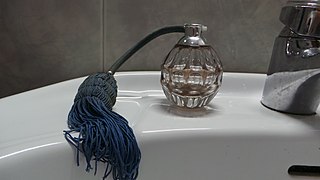 W
WAn atomizer nozzle can take many forms. The first atomizer nozzle, also called an aspirator nozzle, was invented by Dr. Thomas DeVilbliss of Toledo, Ohio, in the late 19th century for producing a fine spray of a liquid based on the Venturi effect. His device was used for spraying medicine on the back of his patients' throats. Atomizer nozzles can create atomization from a variety of mechanical means, which includes but is not limited to electrostatics processes, ultrasonic nozzle and centrifugal forces.
 W
WThe bell-shaped or contour nozzle is probably the most commonly used shaped rocket engine nozzle. It has a high angle expansion section right behind the nozzle throat; this is followed by a gradual reversal of nozzle contour slope so that at the nozzle exit the divergence angle is small, usually less than a 10 degree half angle.
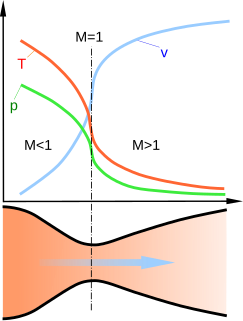 W
WA de Laval nozzle is a tube that is pinched in the middle, making a carefully balanced, asymmetric hourglass shape. It is used to accelerate a hot, pressurized gas passing through it to a higher supersonic speed in the axial (thrust) direction, by converting the heat energy of the flow into kinetic energy. Because of this, the nozzle is widely used in some types of steam turbines and rocket engine nozzles. It also sees use in supersonic jet engines.
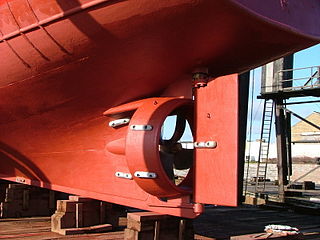 W
WA ducted propeller, also known as a Kort nozzle, is a marine propeller fitted with a non-rotating nozzle. It is used to improve the efficiency of the propeller and is especially used on heavily loaded propellers or propellers with limited diameter. It was developed first by Luigi Stipa (1931) and later by Ludwig Kort (1934). The Kort nozzle is a shrouded propeller assembly for marine propulsion. The cross-section of the shroud has the form of a foil, and the shroud can offer hydrodynamic advantages over bare propellers, under certain conditions.
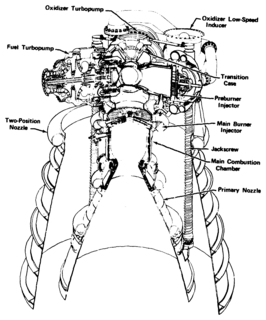 W
WThe expanding nozzle is a type of rocket nozzle that, unlike traditional designs, maintains its efficiency at a wide range of altitudes. It is a member of the class of altitude compensating nozzles, a class that also includes the plug nozzle and aerospike. While the expanding nozzle is the least technically advanced and simplest to understand from a modeling point of view, it also appears to be the most difficult design to build.
 W
WA fog nozzle is a firefighting hose spray nozzle that breaks its stream into small droplets. By doing so, its stream achieves a greater surface area, and thus a greater rate of heat absorption, which, when compared to that of a smoothbore nozzle, speeds its transformation into the steam that smothers the fire by displacing its oxygen. Specially designed fog nozzles have been certified by Underwriters Laboratories (UL) for use on Class B & C hazards.
 W
WA nozzle is a device designed to control the direction or characteristics of a fluid flow as it exits an enclosed chamber or pipe.
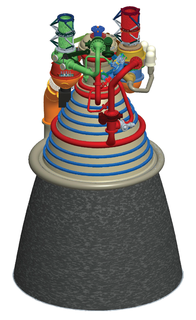 W
WA nozzle extension is an extension of the nozzle of a reaction/rocket engine. The application of nozzle extensions improves the efficiency of rocket engines in vacuum by increasing the nozzle expansion ratio. As a rule, their modern design assumes use of carbon-carbon materials without regenerative cooling. Nozzle extensions can be both stationary, for high-altitude engines, or sliding, for engines designed to operate at a range of altitudes.
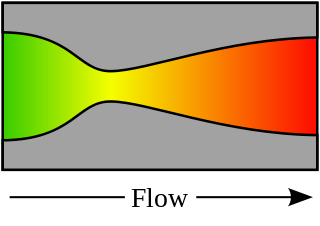 W
WA rocket engine nozzle is a propelling nozzle used in a rocket engine to expand and accelerate the combustion gases produced by burning propellants so that the exhaust gases exit the nozzle at hypersonic velocities.
 W
WIn rocketry, a SERN, which stands for single expansion ramp nozzle, is a type of physical linear expansion nozzle where the gas pressure transfers work only on one side. Traditional nozzles are axially symmetric, and therefore surround the expanding gas. Linear nozzles are not axially symmetric, but consist of a 2D configuration of two expansion ramps. A SERN could also be seen as a single sided aerospike engine.
 W
WA spray nozzle is a precision device that facilitates dispersion of liquid into a spray. Nozzles are used for three purposes: to distribute a liquid over an area, to increase liquid surface area, and create impact force on a solid surface. A wide variety of spray nozzle applications use a number of spray characteristics to describe the spray.